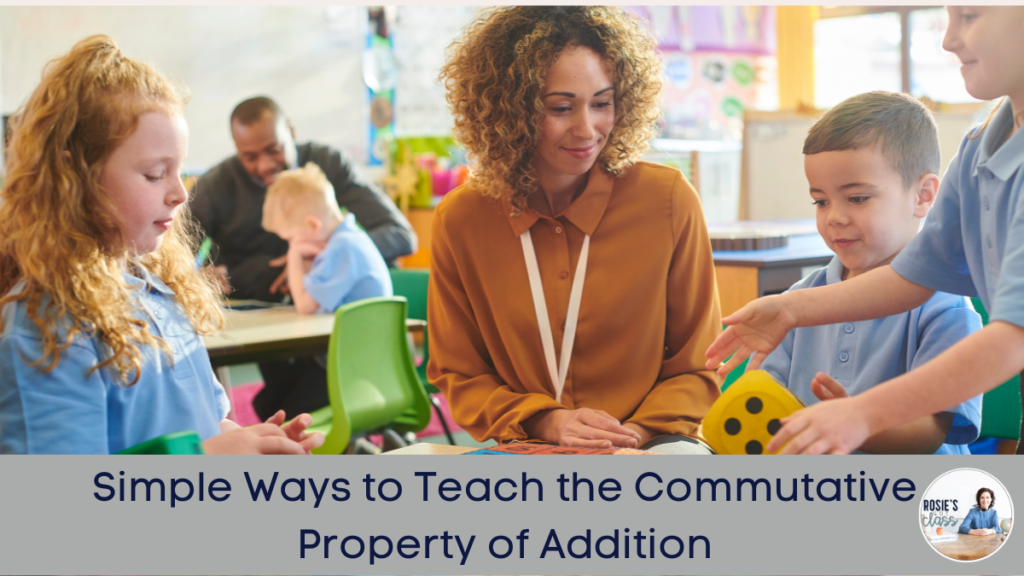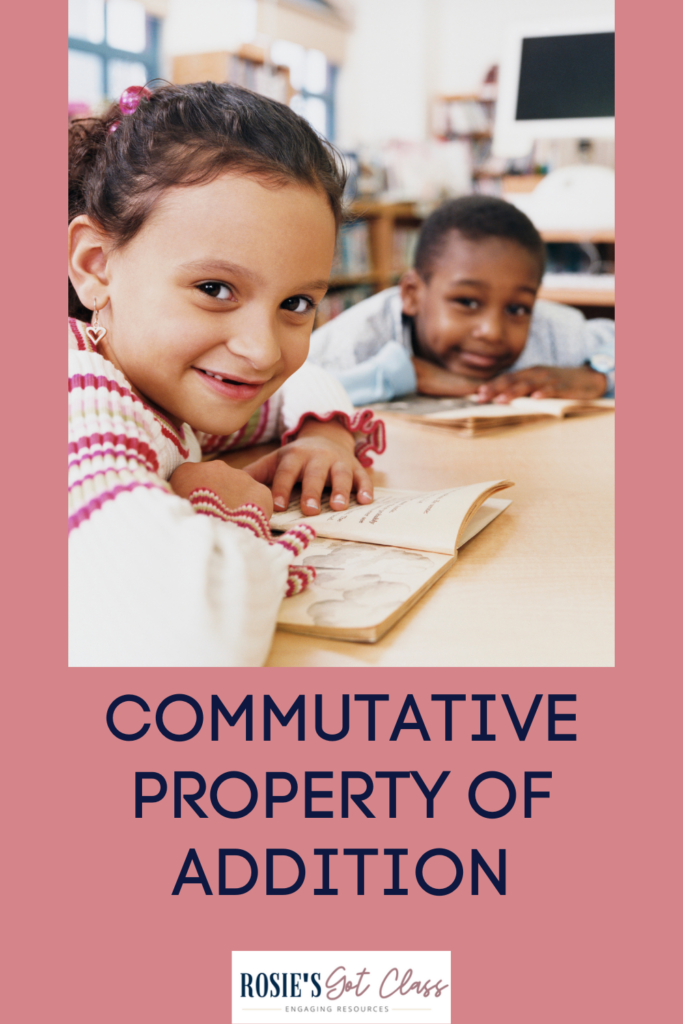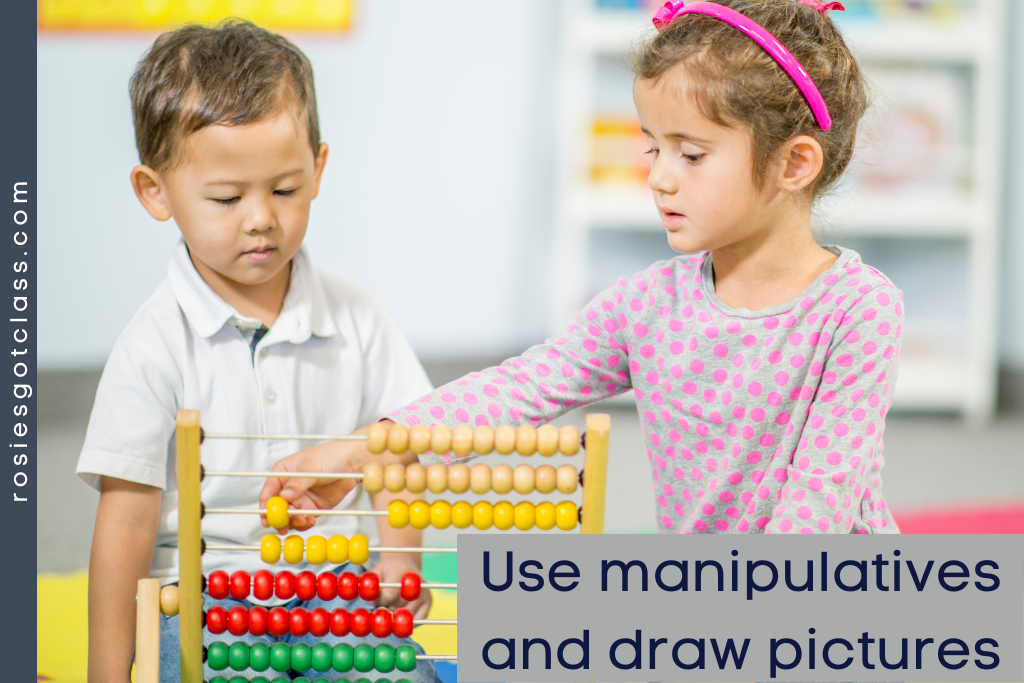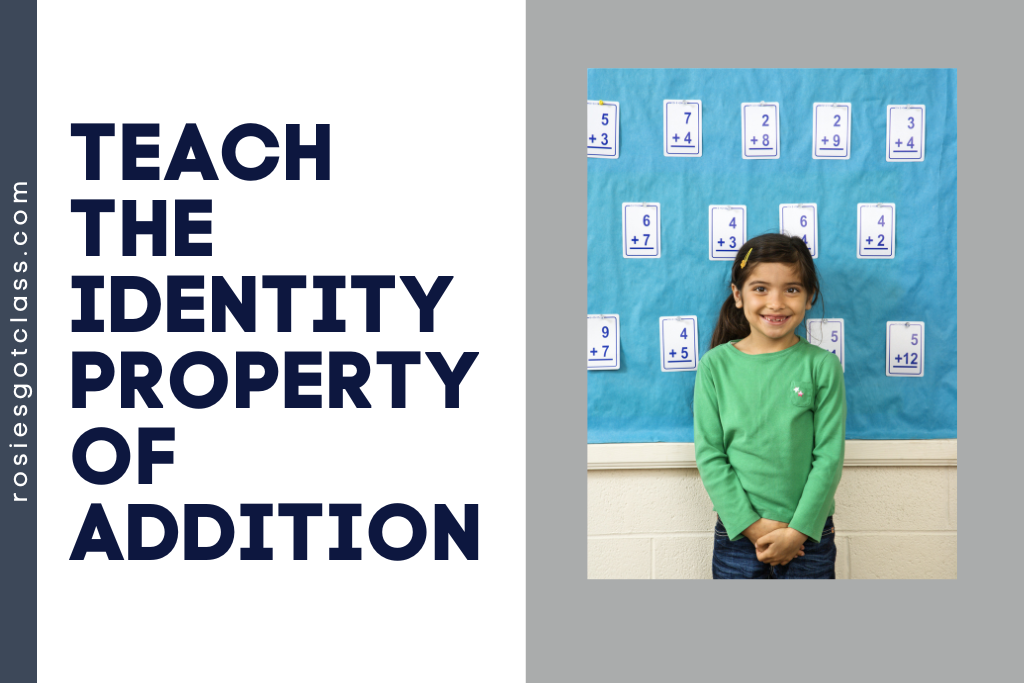
Simple ways to teach the commutative Property of addition
Have you taught your students the Commutative Property of Addition and the Identity Property of Addition? These two strategies are imperative for your students to know to help them strengthen their understanding of addition. When I teach these properties to my students, I teach them on separate days. I like to begin by writing the name of the property of addition on the board. We read the name on the board, and we discuss how smart we sound when we read the name of the property. Then I begin giving examples of the property to help my class understand how simple the property is.
Practicing addition strategies help children develop fact fluency. Have you ever used a classroom transformation? This is one way you can help your students practice addition and subtraction strategies. These fun games can be used for an exciting one day activity or you can use the transformation throughout the week during your math centers. This activity is easy to prep, so you will want this FREE Zoo Classroom Transformation. This is an engaging way to practice both addition and subtraction strategies within 20. Type your name and email in the boxes, and it will quickly be in your inbox.
Are you looking for some creative ways to teach the Commutative Property of Addition and the Identity Property of Addition? These two properties are important to add to your students’ learning. When students use these properties it helps them develop a deeper understanding of addition. They also love knowing that it makes them sound so smart!

Commutative Property of Addition
The Commutative Property of Addition states that the order of the addends in an addition equation does not affect the sum. It doesn’t matter if you add 9+7 or 7+9, the sum will always be 16. You can use these activities to help your students practice this property. It is important that your students understand these concepts in ways that are engaging, understandable, and fun.

Use Manipulatives and Draw Pictures
Give students small manipulatives like buttons or cubes and ask them to create their own addition equations. Let them rearrange the objects to demonstrate the Commutative Property. By using manipulatives, students can physically show that changing the order of the addends does not change the sum.
After your students have had sufficient time to develop understanding with manipulatives, begin drawing pictures. You can model for your students how to draw simple pictures to represent the addition of numbers. Then you can help them understand that changing the order of the numbers does not change the sum. Since they have had experience with using manipulatives, it helps them translate this knowledge to pictures.

Use Storytelling
You can create stories to help these concepts become more solidified. For example, you can tell a story about a child who has three red marbles and two blue marbles. Show that when they put the red marbles in a bag first, and then add the blue marbles, the total remains the same as when they did it the other way around.

The Identity Property of Addition
The Identity Property of Addition sounds much more difficult than it is! This property states that adding zero to any number does not change the value of that number. I love to use large numbers such as 1,000 + 0=1,000 or 1,000,000 + 0=1,000,000. My students love this simple way to help them learn that any number plus zero is the value of the other number.

Provide Real-World Examples
Here are some examples.
- If you have a candy jar with 10 pieces of candy, and then you add zero pieces of candy to the jar, how many pieces of candy do you have? You still have ten.
- If you have 5 pencils in your pencil box, and then you add zero pencils to your pencil box, how many pencils do you have? The amount of pencils stayed the same.
Teaching the Commutative Property of Addition and the Identity Property of Addition to your students is fun! By using manipulatives, drawings, storytelling, and real life examples, you can make these addition strategies fun and memorable. With a deep understanding of these properties, you are helping your students develop more critical thinking and problem-solving abilities. Your students will love learning about these two important addition properties!
Here are some other links to help you.


